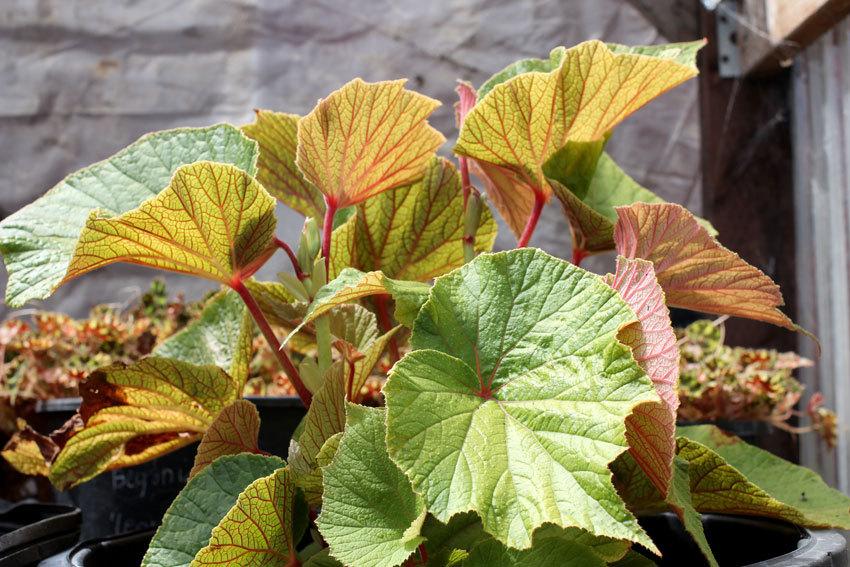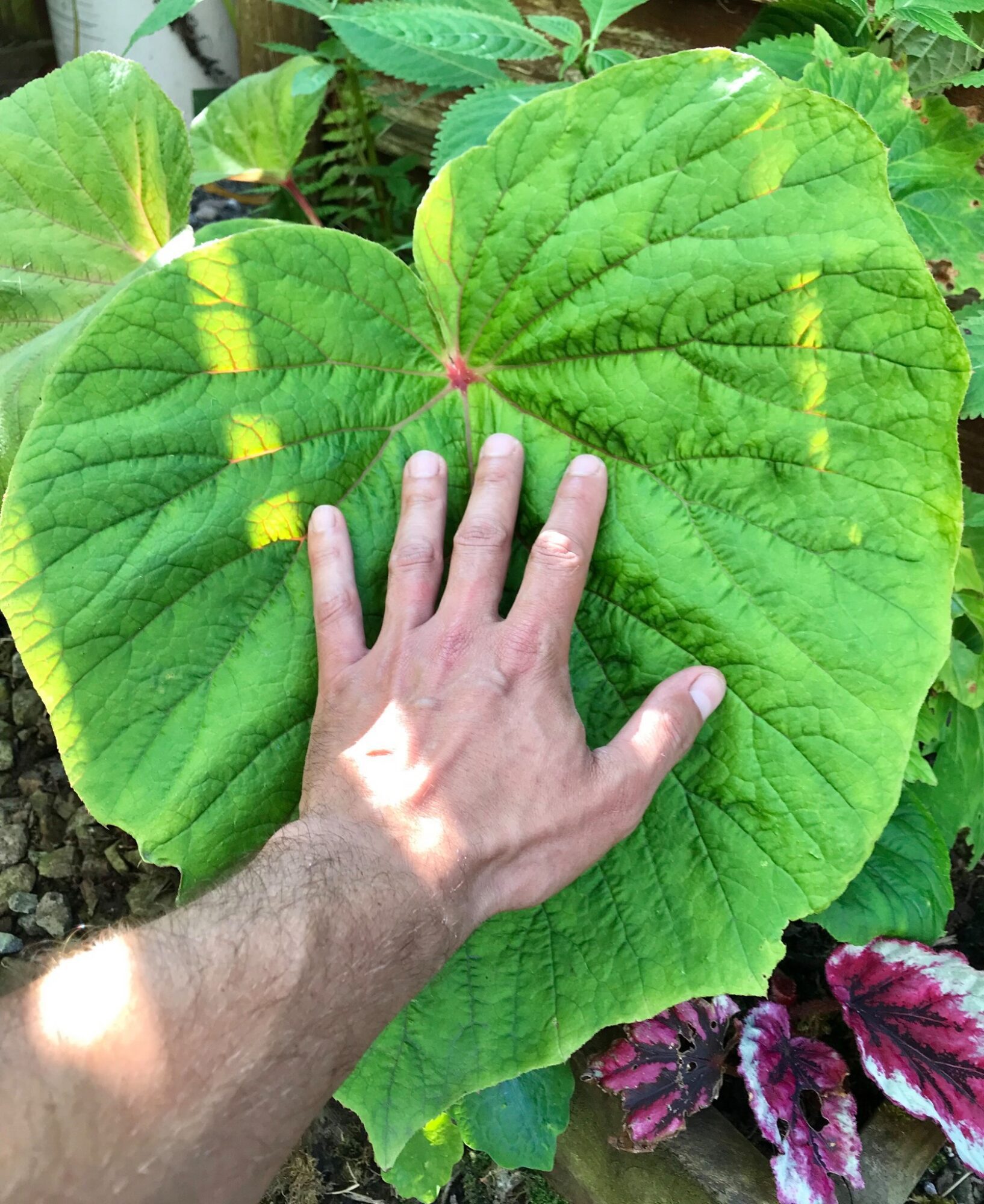This begonia is classified as ‘tuberous, first-generation hybrid, tall-growing’ by the Thompsons. Its flowers are pink and blooms moderately in the late summer and fall. It’s parentage is B. evansiana X B. ‘Bhotan species’. B. evansiana (= B. grandis ssp. evansiana) comes from China.
No one locally seems to have ever seen the B. ‘Bhotan species’ parent, but one can assume that B. ‘Torsa’s huge leaves come from it. Otherwise, it looks pretty much like any of the B. evansiana variants as to foliage and flowers.
The leaves on this plant get up to 18 inches across if culturally happy. Leaves of 12 to 14 inches are easily achieved. For perspective, the plant in the accompanying picture is in a 14-inch bulb pan.
This plant grows from a fairly large tuber. Being tuberous, it starts going dormant as the days grow shorter in the early fall. Foliage becomes very prone to mildew at this time, probably part of the process of going dormant. It appears to be nearly as hardy as it familiar parent. During the ‘big freezes’ my plants of B. ‘Torsa’ survived except for one that had its tuber exposed to the air. It died.
Currently, it also starts exhibiting another characteristic of some tuberous species. That is that bulbils start forming in the leaf axils. These are little bulb-looking growths that look like the ones some lilies produce. But they are not ‘bulbs’ in that sense. They are nascent tubers that fall to the soil surface until early spring. Then they sprout easily and form new plants. First year leaves are 6 to 8 inches in size and in the second year achieve their full potential.
Bulbils from B. ‘Torsa’ and other tuberous species can be collected and pressed into the surface of planting mix and kept outside all winter here in Sacramento. Do not put soil over the bulbil as that will guarantee hundred percent failure. They must remain uncovered to germinate in the spring.
Patrick Worley says that using B. evansiana with New World begonias produces weak crosses. Using rexes which are geographically closer to B. evansiana produces better plants, but cold hardiness is not passed on. Brad Thompson reports that Chevalier uses B. discolor as a synonym for B. evansiana.
Standard treatment with anti-fungals help keep B. ‘Torsa’ an eye-catching plant in anyone’s collection. The only other pest that needs attention is the mealy bug. For growers who like big-leaved plants, this one is a must.




